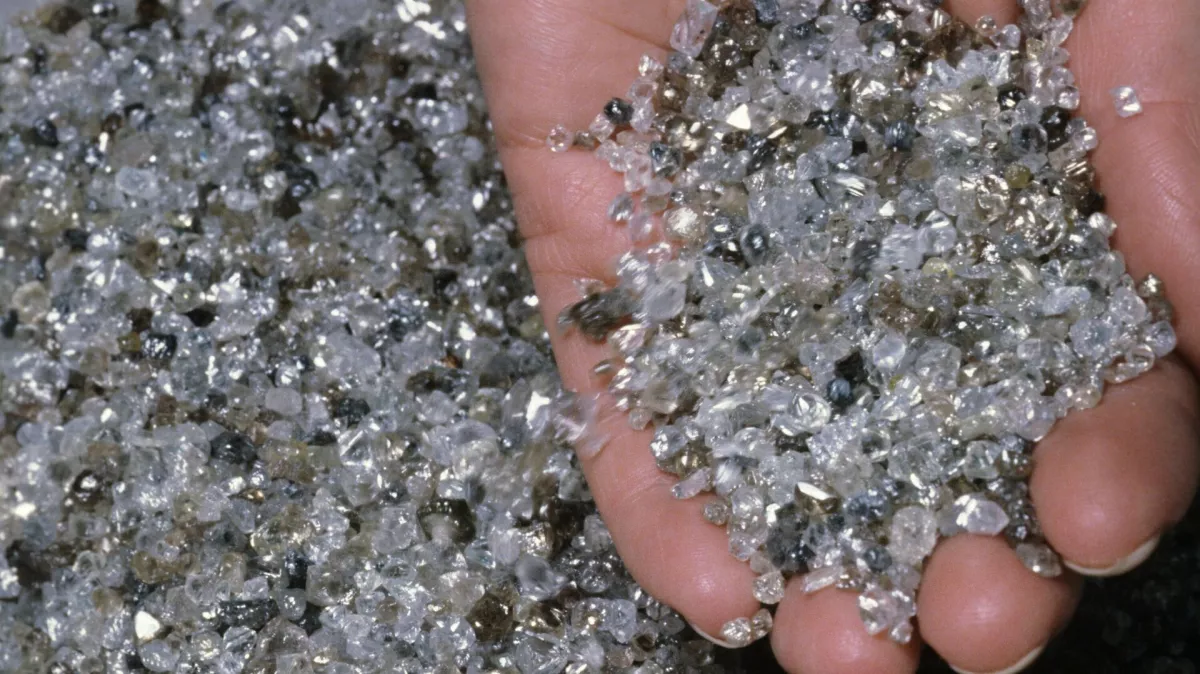Armenia’s foreign trade shrinks to minimum Diamond smoke dispersed
Over the past three years, Armenia’s rapid economic growth has been driven almost entirely by the re-export of electronics, equipment, and other sanctioned goods to Russia, along with the resale of Russian gold and precious stones. According to the Armenian Statistical Committee, the volume of Armenia-Russia trade increased by 56.5% in 2024, with approximately two-thirds of trade operations involving the transshipment of precious metals and diamonds through the “apricot republic” to China and the UAE.
It is quite clear that speculative operations involving gemstones could not last forever. As a result, by the first quarter of 2025, Armenia experienced a noticeable decline in foreign trade, as well as a decrease in domestic industrial production.
It is no secret that since the outbreak of the Russia-Ukraine war in February 2022 and the imposition of anti-Russian sanctions by the collective West, re-export has become the key driver of Armenia-Russia trade relations. Armenian intermediaries began ordering electronics, electrical equipment, machinery, industrial tools, and various components from industrially developed countries in Europe, the United States, and Asia on a massive scale. These dual-use goods were then re-labelled with Armenian customs details and shipped to Russia with new paperwork, generating considerable profits for Armenian companies.
According to a report by Fitch Ratings published about a year and a half ago, exports from Armenia to Russia surged by 300% starting in 2022. However, due to the weakness of Armenia’s industrial and agricultural sectors, they could barely account for even 10% of this growth. Instead, the lion’s share of the Armenia-Russia trade boom was built on the re-export of goods from third countries.
By the end of last year, however, this re-export-driven commerce had significantly deflated under clear pressure from the Western bloc, which has been demanding a clampdown on the flow of dual-use machinery, equipment, and technology to Russia in circumvention of sanctions.

In recent years, one of the most lucrative businesses for Armenian companies has been the import of gold from Russia—both in bullion form and as jewellery—as well as uncut and polished diamonds. Notably, as early as 2022, Armenia imported 89 tonnes of Russian gold worth $5.2 billion, and by early 2023, this figure had reached 111 tonnes valued at $6.2 billion. This trend, despite some slowdown in momentum, continued into 2024.
Virtually the entire volume of Russian gold is re-exported to the United Arab Emirates (UAE), and to a lesser extent, to Hong Kong. In return, large amounts of cash and securities are transferred to Armenia as part of settlement arrangements. According to Armenia’s Statistical Committee, the majority (82.7%) of diamonds imported from Russia were also exported to the UAE. The scale of these operations is underscored by the volume of cash and securities flowing from the UAE to Armenia, which in 2022 alone amounted to $1.45 billion.
Notably, the Armenian jewellery industry itself played almost no role in adding value by manufacturing jewellery from precious metals or cutting imported diamonds. Its function was limited to stamping the Armenian assay mark on Russian-made items, which automatically exempted these products from sanction restrictions. Among the largest importers of Russian gold are companies affiliated with Armenian politicians and businessmen. One of the main players is the “Yerevan Jewellery Factory,” linked to Khachatur Sukiasyan, a deputy from the ruling Civil Contract party. This company purchased gold from around thirty Russian firms and ensured its re-export disguised as Armenian jewellery.
Other major participants in the re-export of jewellery and gold bullion include companies such as Diamond Standard, TB Arm, and Win-Gold. Thanks to these relatively simple schemes involving changes in assay marks, Armenia’s jewellery sector experienced significant growth—from $26 million in jewellery exports in 2020 to $499 million in 2023. These figures are official, but it is likely that a substantial portion of the re-export jewellery traffic was not recorded in tax reports.
By the end of last year, the volume of Russia-Armenia trade exceeded $12.401 billion, marking an annual growth of 56.5%. Approximately two-thirds of all trade transactions involved the supply of gold and precious stones. According to Armenia’s Statistical Committee, operations involving precious and semi-precious stones, precious metals, and related products (the majority of which originate from Russia) accounted for over $8 billion of Armenian re-exports, representing more than a twofold increase compared to 2023 figures.
These numbers clearly demonstrate that speculation in gold and jewellery played an exceptional role in the economic growth indicators of Armenia. However, according to former Finance Minister Vardan Aramyan, these easy profits create serious imbalances in foreign trade and are highly risky. For this reason, Aramyan described the country’s 2025 state budget as dangerous and full of risks, since the growth of its revenue depends on unpredictable developments in global geopolitical processes and other external factors.

In fact, the forecasts made last year predicting a collapse in Armenia’s foreign trade indicators began to materialise at the start of the current year. Due to tightened controls by Western countries and the adoption of additional measures to track the origin of precious metals, Yerevan lost its position as a “re-export hub.”
As a result, according to data from the Armenian Statistical Committee, in the first quarter of 2025, transactions involving gold and precious stones accounted for only 21.6% of total foreign trade, compared to 66.1% ($6.5 billion) a year earlier. The collapse in the jewellery segment was the primary cause of the worsening annual dynamics of the republic’s foreign trade turnover, which plummeted from a 212% growth to a 54.2% decline.
According to Armenian media, since 2025, conducting dubious transactions involving precious metals at previous volumes has become impossible due to the resolution of customs duty issues on jewellery within the Eurasian Economic Union (EAEU). The fact is that since 2020, Moscow repeatedly proposed eliminating import customs duties on coloured precious stones and small diamonds up to 0.2 carats, but this proposal was blocked by Yerevan.
Because of the import customs duties on precious stones, it was far more profitable to import finished jewellery products from third countries outside the EAEU than to produce them within the union. This was due to the fact that customs duties on finished jewellery (10-15%) were lower than those on precious stones used for manufacturing. However, this year Russia, together with its EAEU partners, plans to eliminate duties on jewellery trade with the UAE, which will effectively end Armenia’s high-profit margins on intermediary operations.
The jewellery industry in the “apricot republic” had already felt the negative impact in 2024 — domestic production volumes fell by 32.2%, amounting to $135.4 million. Overall, according to data from the Armenian Statistical Committee, the country’s economic indicators no longer show the dynamism achieved at the peak of the re-export boom. In the first quarter of 2025, industrial production contracted by 18.5%, including declines of 20% and 40% in the production of foil and copper and molybdenum concentrates, respectively. Among export sectors, wine and brandy production were hit hard, with declines of 33.3% and 45.3%, respectively, while the garment manufacturing sector shrank by 16.5%.
As a result, Armenia’s economic growth rate in the first quarter of this year was 4.1%, falling short of the 5% forecast.








